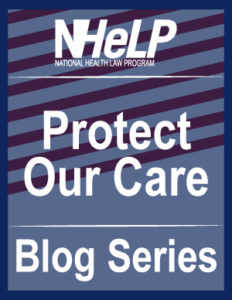Authors: Cassandra Lignelli and Abigail Coursolle
 The Better Care Reconciliation Act (BCRA), the draft bill released by the Senate on June 22, threatens public health in two critical ways. First, BCRA phases out Medicaid Expansion, which means that states would have to spend much more out of their public health budgets to meet the needs of individuals who lose Medicaid coverage. Second, BCRA eliminates funding for the Prevention and Public Health Fund, (PPHF) which is the fund that supports critical public health projects such as prevention, disease management and treatment programs.
The Better Care Reconciliation Act (BCRA), the draft bill released by the Senate on June 22, threatens public health in two critical ways. First, BCRA phases out Medicaid Expansion, which means that states would have to spend much more out of their public health budgets to meet the needs of individuals who lose Medicaid coverage. Second, BCRA eliminates funding for the Prevention and Public Health Fund, (PPHF) which is the fund that supports critical public health projects such as prevention, disease management and treatment programs.Prevention and Screening Saves Lives
The Affordable Care Act (ACA) helped to ensure that more individuals have access to preventative care and screenings. These services have been shown to increase life expectancy without increasing health care costs. Preventative care includes services like necessary medications or smoking cessation support, as well as screening for chronic or infectious disease.
The health benefits of preventative services are well-established. One study found that if 90 percent of the population had access to just four preventative services—tobacco cessation services, alcohol abuse therapy, daily aspirin, and colorectal cancer screening for at-risk individuals—the U.S. would save more than 400,000 life years.
Prevention and screening prevent minor health risks from becoming dangerous health emergencies. For example, blood pressure control reduces the risk of heart disease by 33 percent – 50 percent among people with diabetes. Vaccination saves the lives of 42,000 children each year.
Another area in which public health prevents huge burden of disease is sexual health and STI treatment. Regarding HIV alone, screening is estimated to have prevented 350,000 infections since 1994, which has saved $125 billion in treatment costs.
STIs are alarmingly prevalent, despite the fact that inexpensive education programs have been shown to significantly reduce STIs. For example, the CDC reported 1.5 million new cases of chlamydia in 2015, even though chlamydia is easily prevented, screened, and treated. STIs are most common among young people, people of color, and LGBTQ people, indicating that public health projects are crucial to achieving health equity.
Dollars Well Spent
Not only are BCRA’s cuts to public health bad for our nation’s health, such cuts would cause negative long-term economic consequences. As one example, between 1994 and 2013 alone, vaccination is estimated to have saved $295 billion in direct costs (treating disease and containing outbreaks) and $1.38 trillion in total societal costs including a sicker workforce. Similar money-saving data has been reported for diabetes screening for older adults with hypertension, and early cancer screening in at-risk populations.
Despite economic evidence, BCRA’s cuts to the PPHF immediately strip about $680 million from vaccination, diabetes screening, and cancer screening alone. Under BCRA, the federal government may not pay for vaccines, but states and individuals will pay for the outbreak.
The same principles apply to Medicaid spending. Rolling back the Medicaid expansion saves the federal government, but costs the states money out of their public health budgets because the states must then provide services to (now sicker) individuals who have lost coverage.
Public health does much of the heavy lifting to prevent disease and subsequent health care spending. Thus, we need healthcare legislation that protects and expands public health funding, not legislation that eliminates it.
For more information on BCRA and its impact on public health, sign up for our email list and follow us on Twitter and Facebook.
Share
